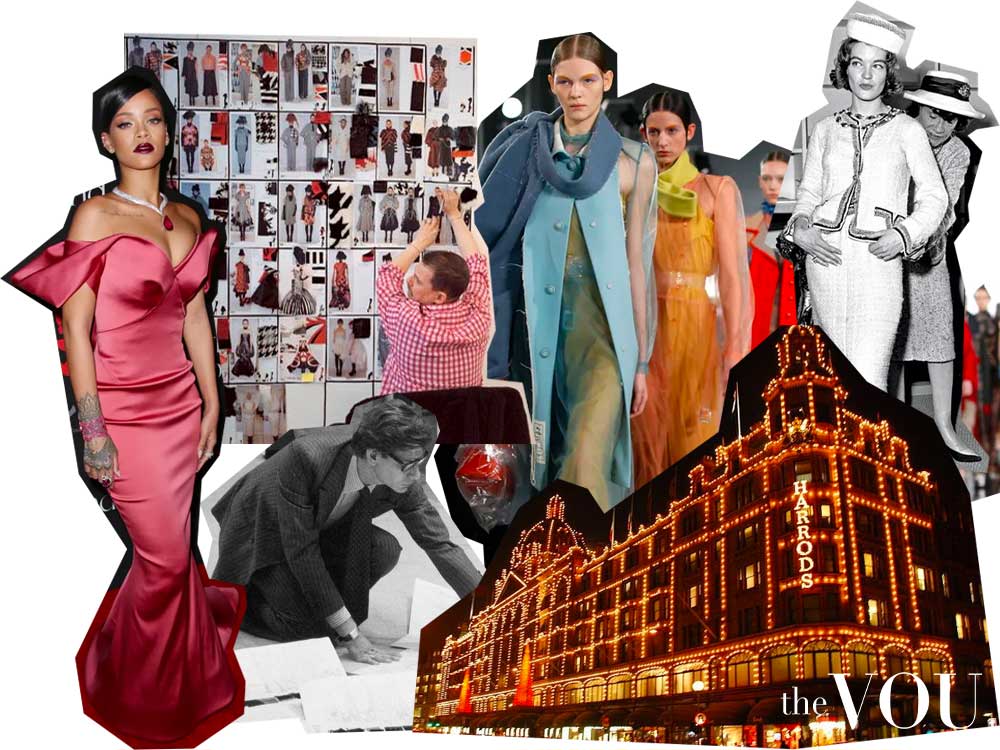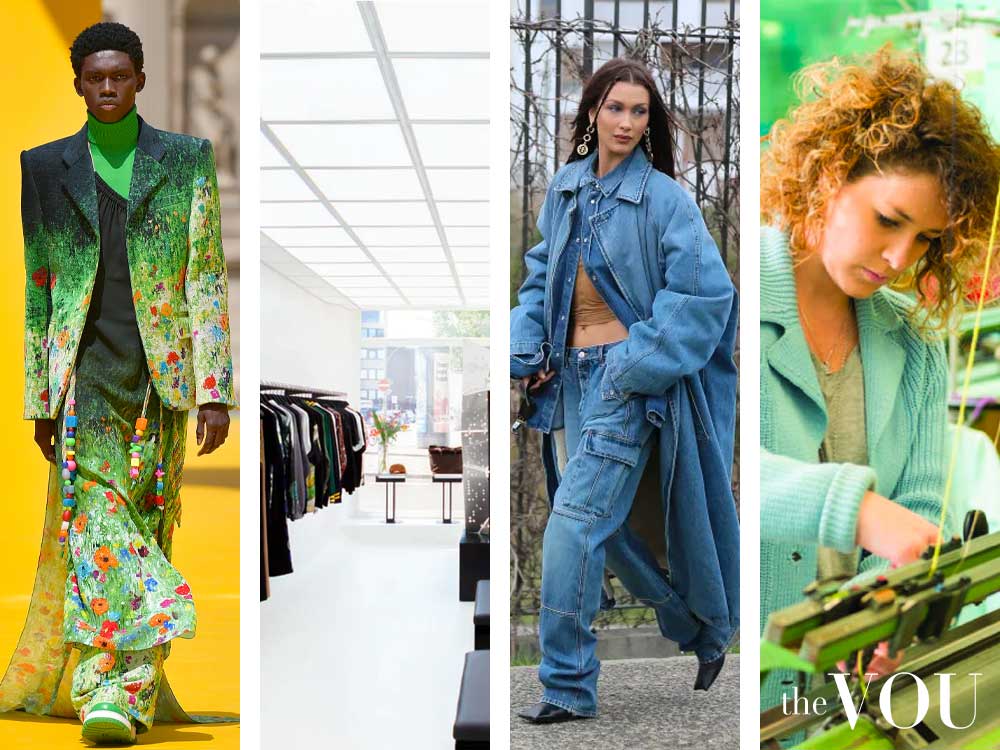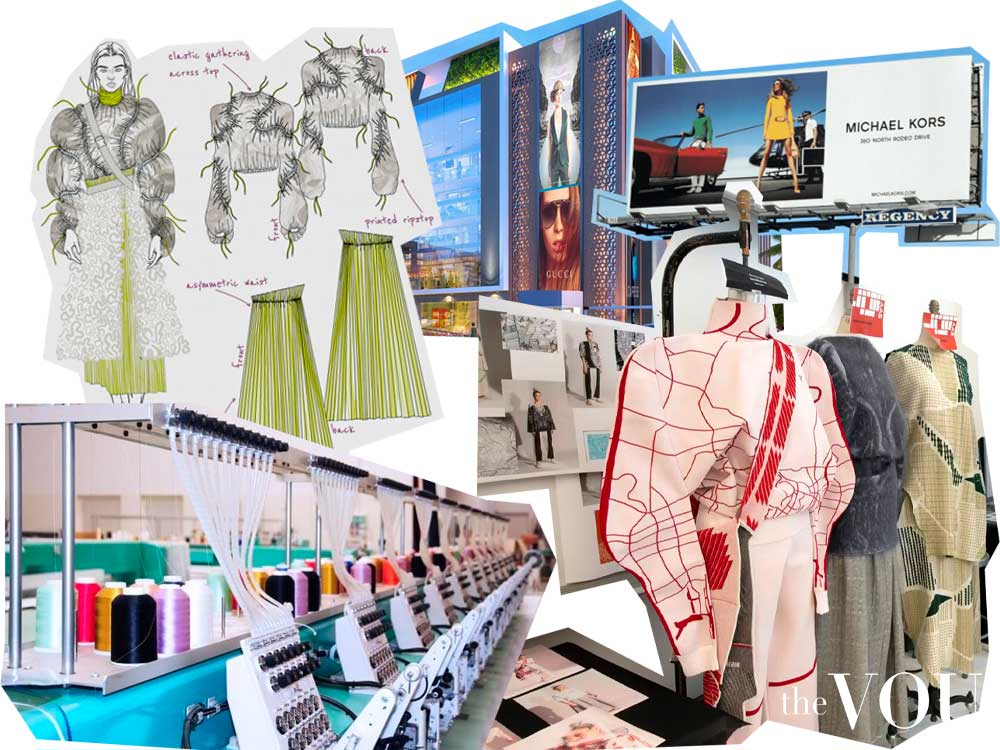What is Fashion?
Fashion is a term used interchangeably to describe the creation of clothing, footwear, accessories, cosmetics, and jewelry of different cultural aesthetics and their mix and match into outfits that depict distinctive ways of dressing (styles and trends) as signifiers of social status and group belonging.

The term ‘fashion’ originates from the Latin word ‘Facere,’ which means ‘to make,’ and describes the manufacturing, mixing, and wearing of outfits adorned with specific cultural aesthetics, patterns, motifs, shapes, and cuts, allowing people to showcase their group belonging, values, beliefs, and ways of life.
The Multiple Facets of Fashion
Often used as a concurrent term to style, trend, and aesthetic concerning one’s look (stylish, trendy, fashionable), the word fashion has a multifaceted, complex meaning.

In this section, we’ll show the multiple facets of fashion (as a term) and its association with styles, aesthetics, and trends.
Fashion as an Industry
The fashion industry encapsulates fashion design, manufacturing, advertising, and retail.
Earlies forms of ‘fashioning’ people emerged in medieval times through custom-made clothing by dressmakers and tailors.
At the start of the 20th century, the process of making fashion (clothes and accessories) was accelerated by technological advancements and the rise in global trade, leading to the adoption of ready-to-wear.

Mass producers and retailers of clothes and accessories formed what we now call the fashion industry, one of the world’s largest employers with a significant share of world economic output.
The fashion industry comprises international manufacturers (fiber, textiles, leather, rubber, fur, etc.), fashion designers, transport and packaging contractors, fashion advertisers, and retailers.
Clothing is designed in one country, manufactured in another, and sold worldwide; raw materials from China, stitched in India and Vietnam, accessorized, labeled, and packaged in Italy and France, and sold worldwide from the United States.
Fashion as a Style
Fashion style is a specific way of dressing showcasing similar aesthetics and designs adopted and transformed by communities and subcultures – Punk, Preppy, Goth – to express their cultural identity and values.
For a way of dressing to be recognized as a fashion style and not a trend or a fad, it must comprise clothes and accessories with similar aesthetics, adopted by a subculture as their way of dressing.

The clothes and accessories must follow similar aesthetics – patterns, motifs, colors, prints, shapes, and materials – to reflect the group’s philosophy, beliefs, values, and lifestyle.
Over time, fashion styles evolve stylistic alternatives that reflect new geographies, cultural landscapes, aesthetic blends with other fashion styles, and the infusion of contemporary fashion trends.
Yet, despite these changes, the core aesthetics of a style remain intact, preserving the subculture’s unique visual language.
Fashion as an Aesthetic
A fashion aesthetic is a cohesive collection of visual and physical elements, such as shapes, patterns, motifs, colors, and materials characteristic of a subculture.

Whether belonging to a previous subculture or historical period, aesthetic elements like patterns, ways of cutting and sewing, colors, shapes, and motifs are used in design and manufacturing to confer clothes and accessories with stylistic relevancy to the subculture they represent.
Visual and physical aesthetic elements have subcultural meanings and go beyond the outfit’s appearance to form a coherent stylistic language that expresses and explains a subculture’s fashion style.
Fashion as a Trend
Fashion trend is a prevailing preference for specific garments, accessories, outfits, and ways of dressing as influenced by the times’ socio-political events, societal shifts, and celebrities.
Inspired by viral movies, songs, or political events, fashion trends mirror culture, politics, technology, and human behavior, showcasing peoples’ ever-changing tastes, values, and societal norms of a given period.

While fashion trends are transient, sometimes lasting less than a season, at times are highly influential in creating new cultural, social, and historical contexts and, thus, shaping fashion styles and industry direction.
The History of Fashion
Under the influence of hundreds of fashion styles, blends of subcultural aesthetics, and regularly emerging trends, fashion is in continuous change.
This dynamic development of fashion is shaped by cultural, social, political, and technological forces, creating a fascinating tapestry that mirrors the times.
The Early Days of Fashion
Terms and practices used to describe fashionable tastes are recorded all the way back to China’s Tang Dynasty and Heian Period Japan over 1500 years ago.
By the 14th century, clothes and accessories with unique patterns and motifs began to emerge in Europe as well.
The Birth of Haute Couture
In the 19th century, the rise of industrialization and democracy spread fashion to broader audiences.
The mass production of ready-to-wear clothing emerged, along with the development of haute couture in Paris, where famous couturiers like Charles Frederick Worth began to shine.
Roaring Twenties to Mid-Century Transformations
From the flapper dresses of the 1920s to the iconic hourglass silhouettes of the 1950s, fashion underwent radical shifts.
Wartime austerity, economic prosperity, and women’s social liberation found expression in clothing and accessories.
The Modern Era and Beyond
In the late 20th and early 21st centuries, subcultures like Punk, Y2K, and Goth have become aesthetic sources of fashion inspiration.
Designers have looked globally for new motifs, patterns, colors, and materials combining concepts from past subcultures with current trends.
Gone were the Victorian era’s long dresses and veiled headgear, replaced by the modern era’s ripped jeans and micro dresses in neon colors.
Technology and Globalization
Manufacturing automation, retail globalization, and the rise of the internet have revolutionized fashion’s infrastructure.
The digital age has democratized how people consume and follow fashion, with live access to the latest fashion shows and the emergence of online shopping.
The Future of Fashion
As we look ahead, fashion continues to be an exciting and multifaceted field, responding to technological shifts, sustainability concerns, and cultural dialogues.
With an ever-changing nature, fashion will continue to adapt to the world’s constant transformations, reflecting and delivering to society’s desires and values.
Weekly Newsletter
Keep up with the latest in fashion, beauty and style!
After years of managing hundreds of fashion brands from London’s office of a global retailer, Mandy has ventured into freelancing. Connected with several fashion retailers and media platforms in the US, Australia, and the UK, Mandy uses her expertise to consult for emerging fashion brands create top-notch content as an editorial strategist for several online publications.









